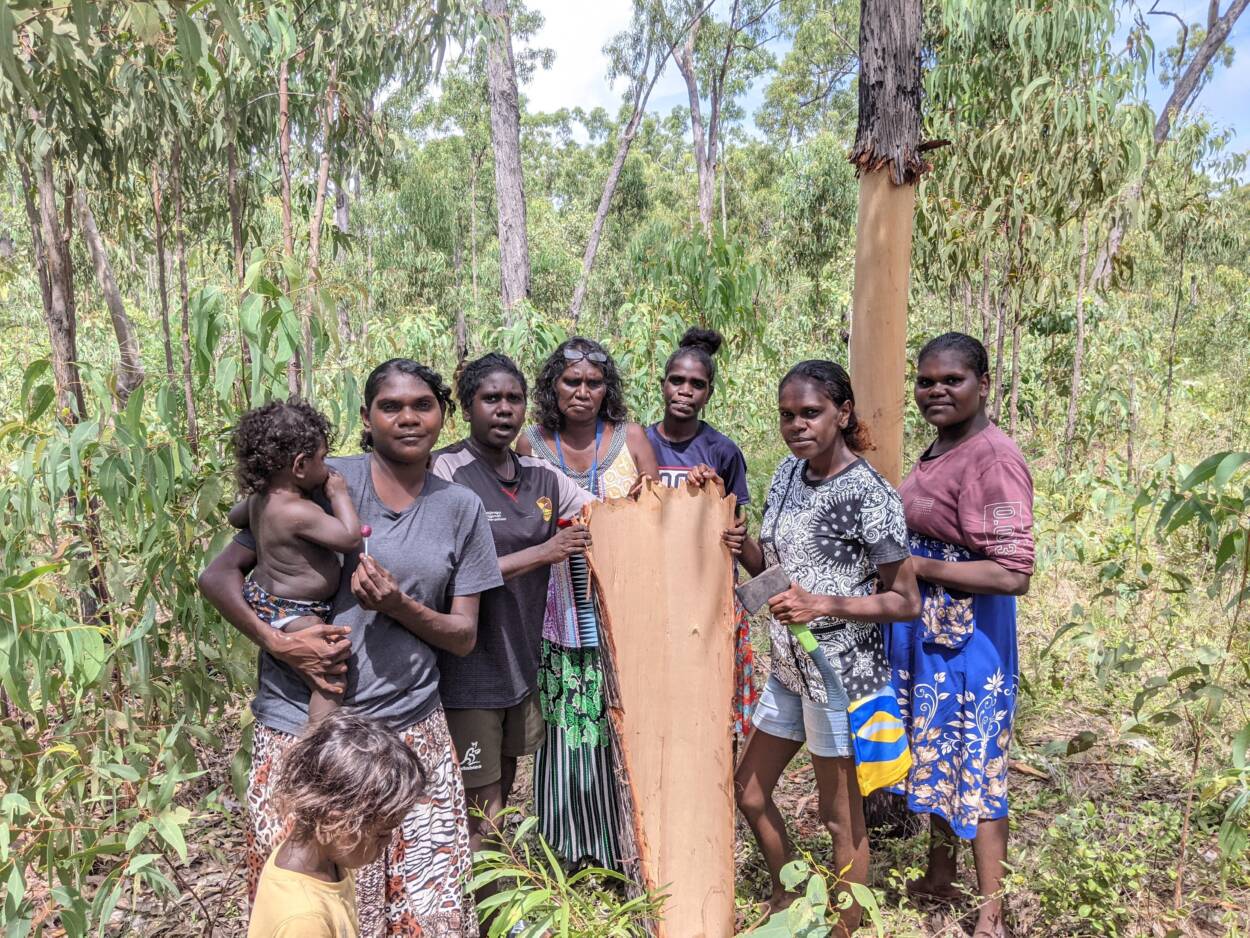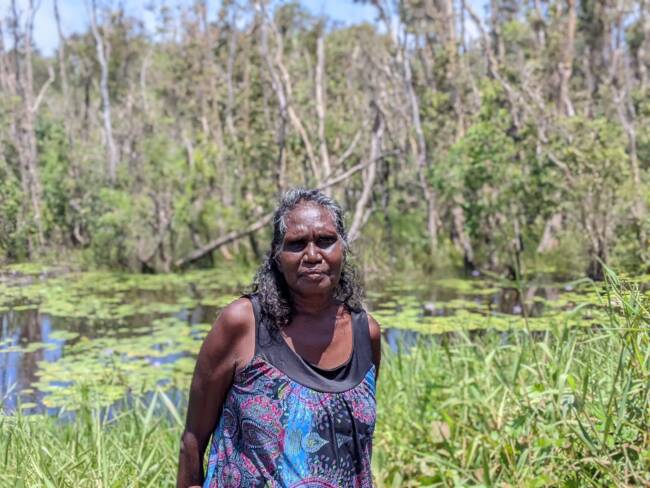Talking history: 'It's important to know the stories'
Date: Apr 30, 2022
Publication Type: Blog
Dhämbiŋ Burarrwaŋa has been a part of the Learning on Country (LoC) Program since 2016 and has been integral to the success of the program in Galiwin’ku.
This year is her last as a LoC Galiwin’ku Cultural Advisor because she will be moving back to Maṯa-Maṯa soon, to be closer to her family and support the Homelands Learning Centre.
“When I was born, I was wrapped in paperbark to keep warm. My mother and father and family stayed at Lathaŋaŋur, on the long beach called Waḻitŋurra. It was there that my father gave me the the names Lathaŋa and Beyalŋa.
My family put me into a canoe my father had made and paddled back down the peninsula to the homelands at Maṯa-maṯa. We had two canoes, one called Djulpan and the other called Bamaduka.
My father had four brothers, three of them travelled with us everywhere. My father had seven wives: Djulka, Dhopi, Gulanu, Gopayurmi, Matjunaru, Yundurrŋu and Wapulkuma.
When I was a young girl I would travel around with my parents to different places and I would help my father make fire and do things. I would sit on my father’s knee and he would tell me stories about his life and our family and the Country.
At the different times of the year we would travel to different places and there we would learn the names of the Country and the stories of the places.
When I was a girl I learnt about the places that I was related to and the place called Bawaka – my family home. I learnt about Ŋapinya which is my mother’s homeland. I learnt about Maṯa-maṯa, my grandmother’s land and I learnt about my mother’s mother’s mother’s land, and Gurrumuru my sister’s Country.
Ms Burarrwaŋa with Galiwin'ku LoC students and a staff member from Galiwin'ku Women's Space.
When I was a teenager I moved to Galiwin’ku, where I went to school and made lots of friends. My girlfriends and I would go for walks after school; we learnt about friendship and each other’s Country and each other’s lives. We would learn about the flowers and plants, and the seasons, animals, fish and maypal (shellfish) of this place.
Later, when I was a little older, the science teacher, Ian Morris, would take us out to learn about the animals of Galiwin’ku. It was here at Galiwin’ku that we first came into contact with Balanda and here we learnt about the Balanda law and rules.
When I was a girl I was promised to my husband. In a ceremony the husband came to my mother and father and they made a promise of me for when I grew up. This is the way that we all were married when I was a girl and I was happy to be married in this way.
I have followed the law and cared for my husband and our children. We have one daughter and two sons.
When I left school I began to work at the Gracella Sewing Centre with sister Buṯanbil, and later I became a teacher and worked on the Homelands at Maṯa-Maṯa.
I worked as a teacher at Galiwin’ku and then I worked for Red Cross and for Yalu, teaching young women how to be better mothers as part of the Indigenous parenting service. I also worked for the Galiwin’ku Women’s Space and volunteered for the family violence group.
Ms Burarrwaŋa says the Learning on Country Program is a way for her to teach children about their relationship to Country, to sea, to the freshwater and to the bush.
Later I started work as a Miyalk (female) Ranger and then the school outreach work, teaching children about their Country, before starting work with the Learning on Country program.
The Learning on Country Program is a way for me to teach children about their relationship to Country, to sea, to the freshwater and to the bush. I can talk to them about their relationships to the animals, plants, birds, and fish of the Country they live in. I can tell them about the seasonal availability of bush resources and the return of certain kinds of animals in the year. I tell children about when to light fires and whose Country it is. Most importantly I teach children about their relationship to each other and the Country that they live on.
What is most important are the stories of the Country. All of the different countries have stories and languages and colours and dances and ceremonies. These dances and ceremonies and colours are linkages that tie all the people of this place together and to the land. It is a network of links to our ancestors and their stories and their creations that make us all one people.
It is these understandings about the importance of our myths, legends, languages that are so critical. This is the work that I do because I understand how important it is to be related to Country and to know the stories of Country.



